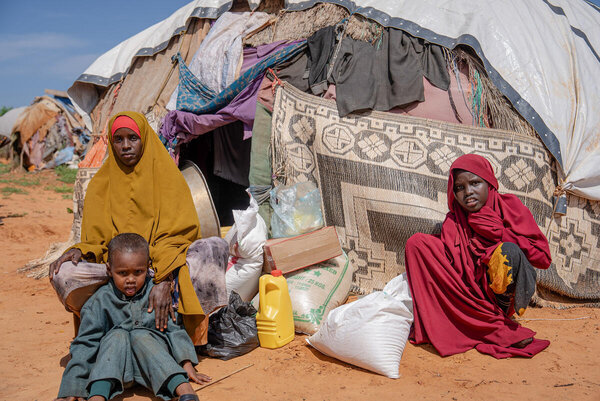In November, WFP will have to reduce the number of people who receive emergency food assistance to just 350,000 people, down from 1.1 million in August. This means that WFP will be supporting less than 1 in every 10 people who are in need of food assistance for survival.
"We are seeing a dangerous rise in emergency levels of hunger, and our ability to respond is shrinking by the day," said Ross Smith, WFP's Director of Emergency Preparedness and Response. "Without urgent funding, families already pushed to the edge will be left with nothing at a time when they need it most."
The latest Integrated Food Security Phase Classification (IPC) report shows that 4.4 million people in Somalia are facing crisis level of food insecurity or worse (IPC 3+), including nearly 1 million in emergency levels of hunger (IPC 4), a number that has increased by 50 percent in just six months.
Malnutrition also remains alarmingly high, with 1.8 million children under five acutely malnourished and 421,000 suffering from severe malnutrition. WFP's nutrition programmes are also facing reductions with just 180,000 children still receiving nutrition treatment.
Somalia's hunger crisis is unfolding in a fragile and fast-moving context, where even the smallest shocks can have devastating consequences for families and communities. This year, the compounded effects of severe drought, conflict, and reduced humanitarian assistance have rapidly pushed the most vulnerable families into emergency levels of food insecurity. Without urgent action, this trend is likely to continue, and could tip those worst affected into catastrophic conditions.
WFP leads the largest humanitarian operation in Somalia, supporting over 90 percent of the country's food security response. This lifeline is now at risk. Deepening funding constraints have already forced WFP to halve its monthly coverage, compared to one year ago.
"The current level of response is far below what is required to meet the growing needs," warned Smith.
WFP urgently requires US$98 million to sustain a minimum of life-saving operations for 800,000 people through the lean season until March 2026. Without urgent additional funding, these reductions could deepen - just as humanitarian needs continue to grow.







